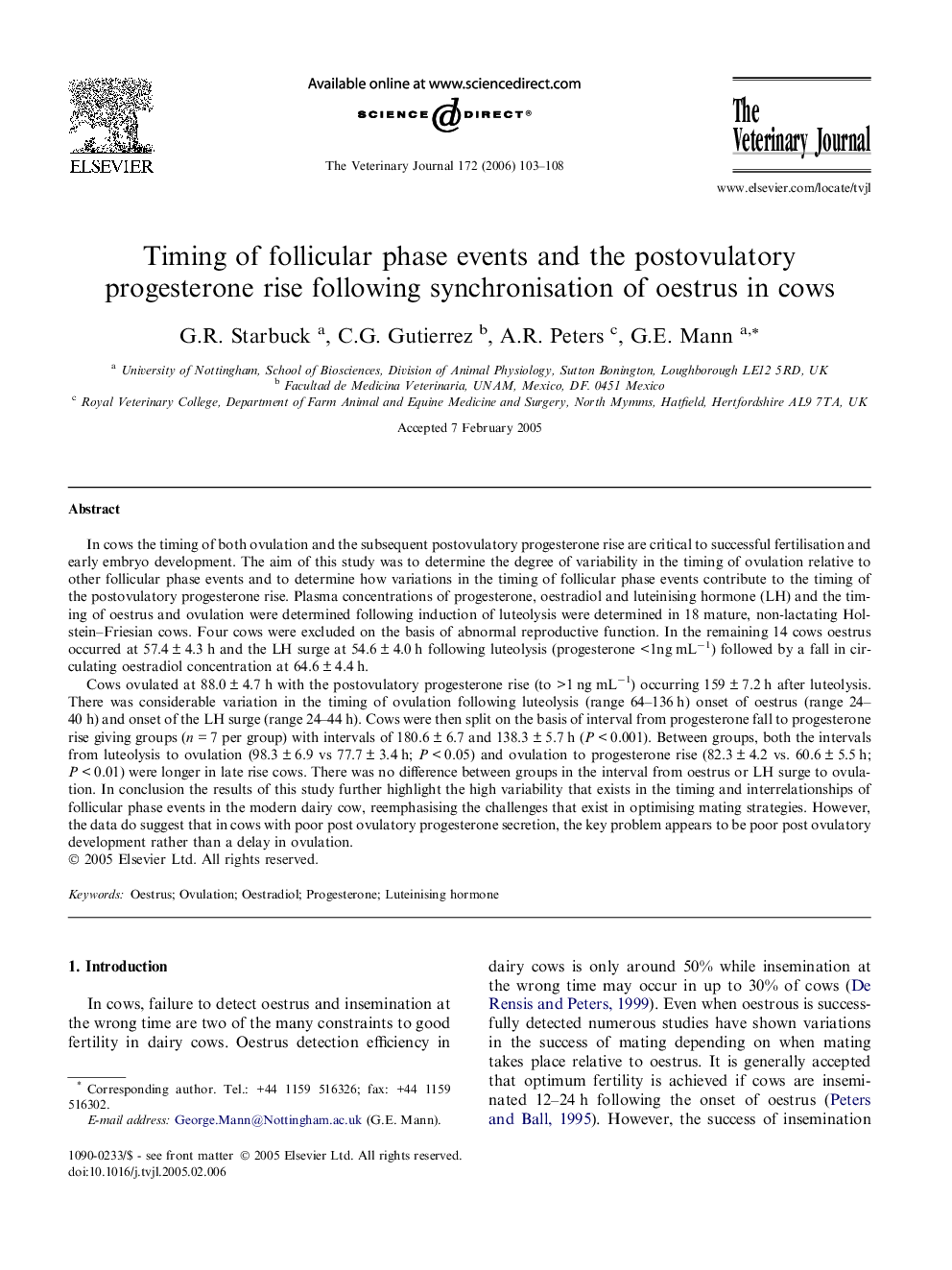| Article ID | Journal | Published Year | Pages | File Type |
|---|---|---|---|---|
| 2466043 | The Veterinary Journal | 2006 | 6 Pages |
In cows the timing of both ovulation and the subsequent postovulatory progesterone rise are critical to successful fertilisation and early embryo development. The aim of this study was to determine the degree of variability in the timing of ovulation relative to other follicular phase events and to determine how variations in the timing of follicular phase events contribute to the timing of the postovulatory progesterone rise. Plasma concentrations of progesterone, oestradiol and luteinising hormone (LH) and the timing of oestrus and ovulation were determined following induction of luteolysis were determined in 18 mature, non-lactating Holstein–Friesian cows. Four cows were excluded on the basis of abnormal reproductive function. In the remaining 14 cows oestrus occurred at 57.4 ± 4.3 h and the LH surge at 54.6 ± 4.0 h following luteolysis (progesterone <1ng mL−1) followed by a fall in circulating oestradiol concentration at 64.6 ± 4.4 h.Cows ovulated at 88.0 ± 4.7 h with the postovulatory progesterone rise (to >1 ng mL−1) occurring 159 ± 7.2 h after luteolysis. There was considerable variation in the timing of ovulation following luteolysis (range 64–136 h) onset of oestrus (range 24–40 h) and onset of the LH surge (range 24–44 h). Cows were then split on the basis of interval from progesterone fall to progesterone rise giving groups (n = 7 per group) with intervals of 180.6 ± 6.7 and 138.3 ± 5.7 h (P < 0.001). Between groups, both the intervals from luteolysis to ovulation (98.3 ± 6.9 vs 77.7 ± 3.4 h; P < 0.05) and ovulation to progesterone rise (82.3 ± 4.2 vs. 60.6 ± 5.5 h; P < 0.01) were longer in late rise cows. There was no difference between groups in the interval from oestrus or LH surge to ovulation. In conclusion the results of this study further highlight the high variability that exists in the timing and interrelationships of follicular phase events in the modern dairy cow, reemphasising the challenges that exist in optimising mating strategies. However, the data do suggest that in cows with poor post ovulatory progesterone secretion, the key problem appears to be poor post ovulatory development rather than a delay in ovulation.
